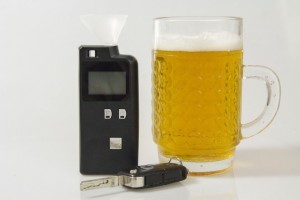 When you consume alcoholic beverages, the alcohol is absorbed into your bloodstream. Over time, your body metabolizes this alcohol, bringing your blood back to its normal levels. Generally speaking, it takes your body about an hour to metabolize a glass of wine or beer or a single shot. As the alcohol concentration rises in the blood, so does the person’s level of intoxication. The measurement of this is called your blood alcohol concentration (BAC.)
When you consume alcoholic beverages, the alcohol is absorbed into your bloodstream. Over time, your body metabolizes this alcohol, bringing your blood back to its normal levels. Generally speaking, it takes your body about an hour to metabolize a glass of wine or beer or a single shot. As the alcohol concentration rises in the blood, so does the person’s level of intoxication. The measurement of this is called your blood alcohol concentration (BAC.)
If you’ve been drinking and get behind the wheel, you risk being pulled over and subjected to a number of tests, including a preliminary alcohol screening device. This is a tool police officers use to estimate your BAC.
Individuals can also purchase breathalyzers for personal use, however most people do not, and as such, are unfamiliar with the device if they are ever asked to use one by law enforcement.
So how do preliminary alcohol screening devices work? Let’s take a look.
The PAS Test
PAS devices detect trace amounts of ethanol on your breath. Typically, you’ll be asked to take a deep breath and blow into the tube on the machine. The machine needs sufficient breath (called deep lung air) in order to produce an estimate of your BAC based on the ethanol it detected. If it reports a number at or greater than 0.08%, the officer has established probable cause and you may be placed under arrest for DUI.
You can also refuse this test with no consequence.
Common Errors That Can Occur
PAS devices are essentially small computers, which means they are not perfect, and things can go wrong. There’s also human error that can occur. If you’ve been arrested for DUI and the officer used a PAS device on you, your DUI attorney can investigate for any evidence that may point to such errors in your breathalyzer reading.
Remember, there’s any number of factors that could go wrong here – improper or out-of-date calibration can cause false readings, as can interfering non-alcohol substances. These machines also measure mouth alcohol, which may be higher than that which is in your bloodstream.
California Breathalyzer Tests: The Numbers
In the state of California, you’re considered over the legal limit if your blood alcohol level measures at or above 0.08%. This means that if you’re pulled over after you’ve had a few drinks, and you haven’t given your body enough time to metabolize the alcohol, a reading of 0.08% or higher could likely result in an arrest for DUI.
Bear in mind that the penalties for minors are far harsher as an effort to deter underage drinking as well as drinking and driving. At present, anyone under the age of 21 who is suspected of driving under the influence and blows a 0.01% or higher will likely be arrested, face strict penalties and fines.
If you’ve been pulled over by an officer and failed a breathalyzer test, you’re likely facing DUI or DWI charges.
Contact Jon Artz today if you need to speak with an experienced Los Angeles DUI Lawyer. The fastest way is by calling: 310-820-1315.


